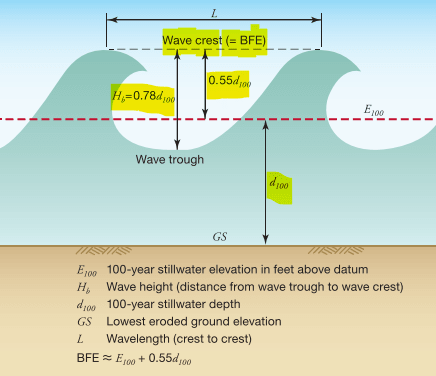DG57
Structural
- Jun 13, 2013
- 4
In Chapter 5 of ASCE 7, equation 5.4-3 has the stillwater depth elevation, Ds as:
Ds = 0.65(BFE - G)
However, the Coastal Construction Manual has it as:
Ds = (BFE - G).
Does anyone the origin of the 0.65 factor? It makes a BIG difference in calculating the breaking wave on vertical walls.
Thank you.
Ds = 0.65(BFE - G)
However, the Coastal Construction Manual has it as:
Ds = (BFE - G).
Does anyone the origin of the 0.65 factor? It makes a BIG difference in calculating the breaking wave on vertical walls.
Thank you.

